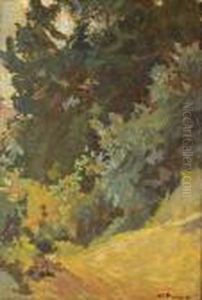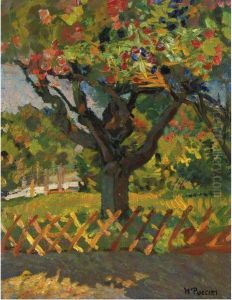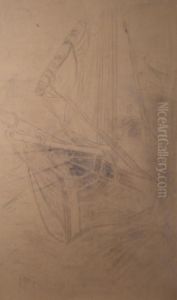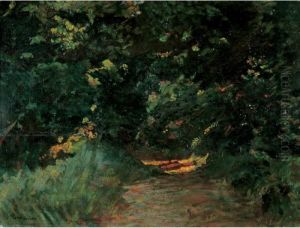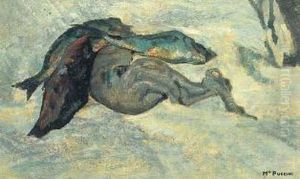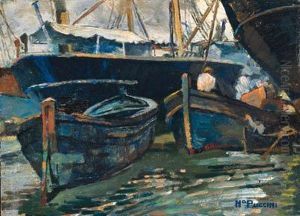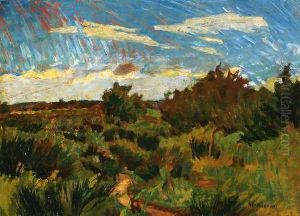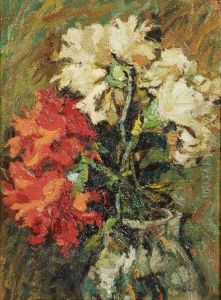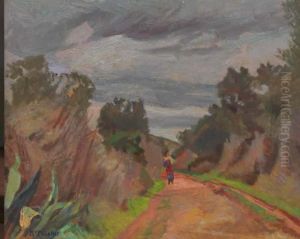Mario Puccini Paintings
Mario Puccini was an Italian painter associated with the Post-Macchiaioli movement, born in 1869 in Pisa, Italy. He is not to be confused with the famous Italian composer Giacomo Puccini, although they share a last name and were contemporaries. Mario Puccini was known for his vibrant and expressive paintings, which often depicted scenes of daily life, landscapes, and urban vistas. His works are characterized by a bold use of color and a dynamic brushwork that captures the essence of the scene with emotion and immediacy.
Puccini received his early art education in Florence, which was the center of the Macchiaioli movement, a precursor to the Impressionist movement. The Macchiaioli artists were known for their innovative use of 'macchie' or patches of color, and although Puccini came into the scene later, he was influenced by their approach to painting.
During his career, Mario Puccini traveled around Italy, drawing inspiration from various regions. He was particularly drawn to the Tuscan landscape and the bustling life of cities like Florence and Milan. Despite being less renowned than his namesake composer, Mario Puccini made a significant contribution to the Italian post-impressionist scene with his emotive and often poignant works.
Puccini's paintings were widely exhibited during his lifetime, including shows in Florence and Venice. He participated in the Venice Biennale, an international art exhibition, where his works received recognition. His art was well received by critics and collectors alike, and he established himself as a respected figure in the Italian art world of the early 20th century.
Sadly, Mario Puccini's life was cut short when he died in 1920 at the age of 51. Nevertheless, his legacy lives on through his paintings, which continue to be appreciated for their contribution to the evolution of Italian art. Today, his works can be found in various art galleries and private collections around the world.









